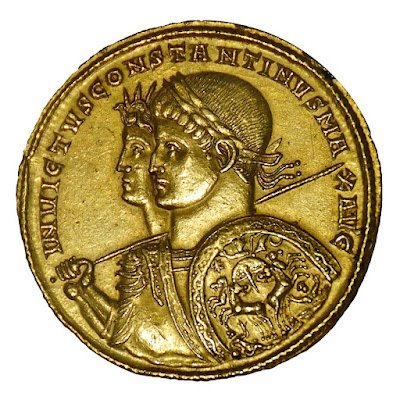A poster at
Civil War Talk pointed out this videotaped conference entitled
Could the Civil War Have Been Avoided?, and I thought I'd pass along the recommendation. It's got a fine panel of participants, including William Freehling, Harold Holtzer and Craig Symonds.
As I commented on the CWT thread, I think the most important lesson to be drawn from the discussion is that the question "Was the Civil War Inevitable?" is in fact overbroad and subsumes a number of different questions, such as:
Was the Civil War - that is, the war that broke out in the Spring of 1861 - inevitable?
Was a civil war - that is, some of sort war between northern and southern states, either before (e.g., 1833 or 1850-51) or after 1861 - inevitable?
Was secession inevitable?
Was the northern reaction to secession inevitable?
Was the war in the form it took - with Virginia, Tennessee, North Carolina and Arkansas joining the Confederacy - inevitable?
The failure to identify which sub-question one is addressing - a mistake that the most of the participants in the conference avoid - is what makes, I think, most discussions of the topic unproductive, and why they often descend into name-calling.
I like people who agree with me as the next guy, so I'll also point out that the participants at least touched on a number of issues that I've discussed from time to time, such as:
Prof. Symonds (roughly 27:00) points out that causation is not the same as motivation. I'm sure I've made that point, but I can't find the frickin' post.
Prof. Symonds also notes (about 27:45), in response to some hand-wringing over whether the war should have come sooner than it did, that the north might well not have prevailed in a war fought earlier. Pointing to the north's industrialization during the 1850s, he opines that "the south could easily have won" a war that started in 1850. This is a point I have argued several times. See, for example, my posts
Was the Compromise of 1850 a Good Thing or a Bad Thing? and
Millard Loses a War He Didn't Fight.
In a race between the railroad and the telegraph the "telegraphic
candidates," Lewis Cass and William O. Butler, are first to the White
House. The artist ridicules Zachary Taylor for his hazy stance on major
campaign issues and manages a jibe at the "dead letter" affair as well.
(See "The Candidate of Many Parties," no. 1848-24.) Other presidential
candidates Henry Clay, Martin Van Buren, and a third (possibly John P.
Hale) are also in the race, traveling in a small boat, on a horse, and
in a wheelbarrow respectively. Taylor and his running mate Millard
Fillmore ride a locomotive "Non-Comittal. No Principles." along a track
toward the White House (left). Taylor (seated on the engine): "Why Fill,
my boy, we must be on the wrong track!" Fillmore (in the cab): "Yes,
but if you hadn't dealt so much in the Mail line, it would have been all
right!" The "Mail line" is a reference to the dead letter affair.
Above them, Cass and Butler walk across telegraphic wires to enter a
window of the White House. Cass, holding a sword (a memento of his 1812
military service), declares "I seek the people's eternal happiness!"
Butler, holding onto Cass's coattail and thumbing his nose, yells back
to Taylor "Zack, for old acquaintance sake I should like you to have
been on the right side." Butler, like Taylor, served as a general in the
Mexican War. Butler also taunts Van Buren, who ambles along on a
scrawny horse at the far right, "O, Marty how are greens?" Van Buren
(in a mock-Dutchman's accent): "O, mine got! Shonny! we pe a great deal
mush pehind our time!" To the right of the train is a wheelbarrow from
which protrude the legs and arms of another contestant, probably Liberty
party candidate John P. Hale. A black man, representing abolitionism,
lies on the ground beside the cart. Hale: "You d--d lazy niger get up
and push along or we shall never get there!" Abolition: "De lor bless
us all, me satisfy I go sleepey!" Henry Clay, in a sinking boat on the
left, laments, "A pretty pass affairs have come to!" Samuel F. B. Morse
had installed the first telegraphic line, linking Baltimore and
Washington, in 1844. While still a novelty in 1848, the line may have a
metaphorical significance in "The Telegraphic Candidates--&1as the
symbolic path between Baltimore, where Cass and Butler were nominated,
and Washington. The print must have appeared in the summer of 1848,
between the May convention, which nominated Cass and Butler, and Hale's
withdrawal from the race in August. Weitenkampf cites a version of the
print in the New York Historical Society with the title "Popular
Conveyances, or Telegraphic Dispatches for the White House."






























